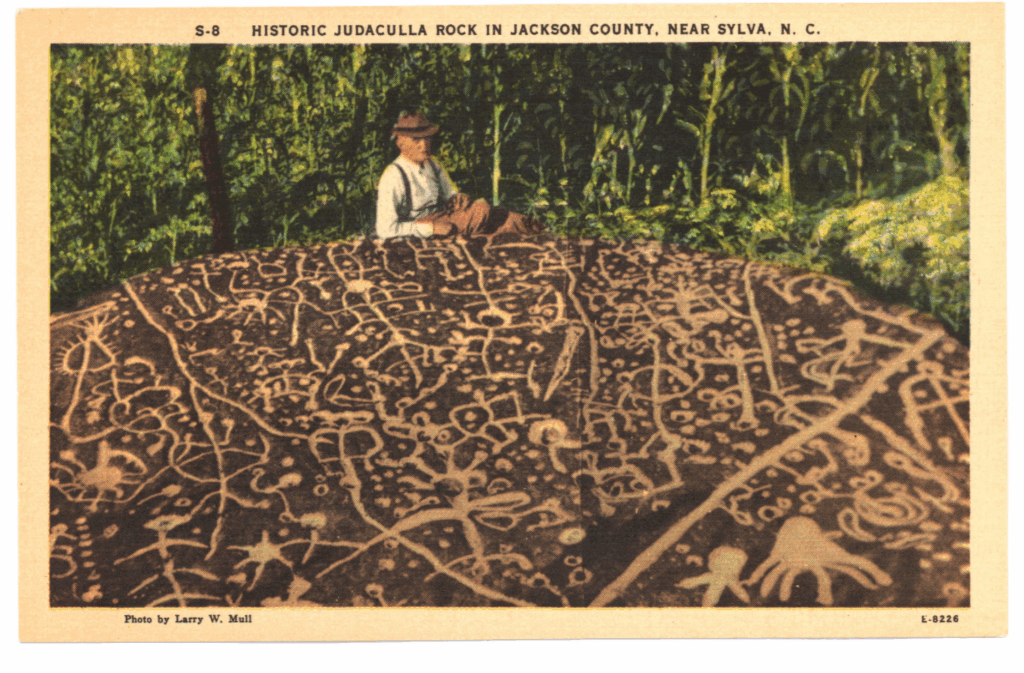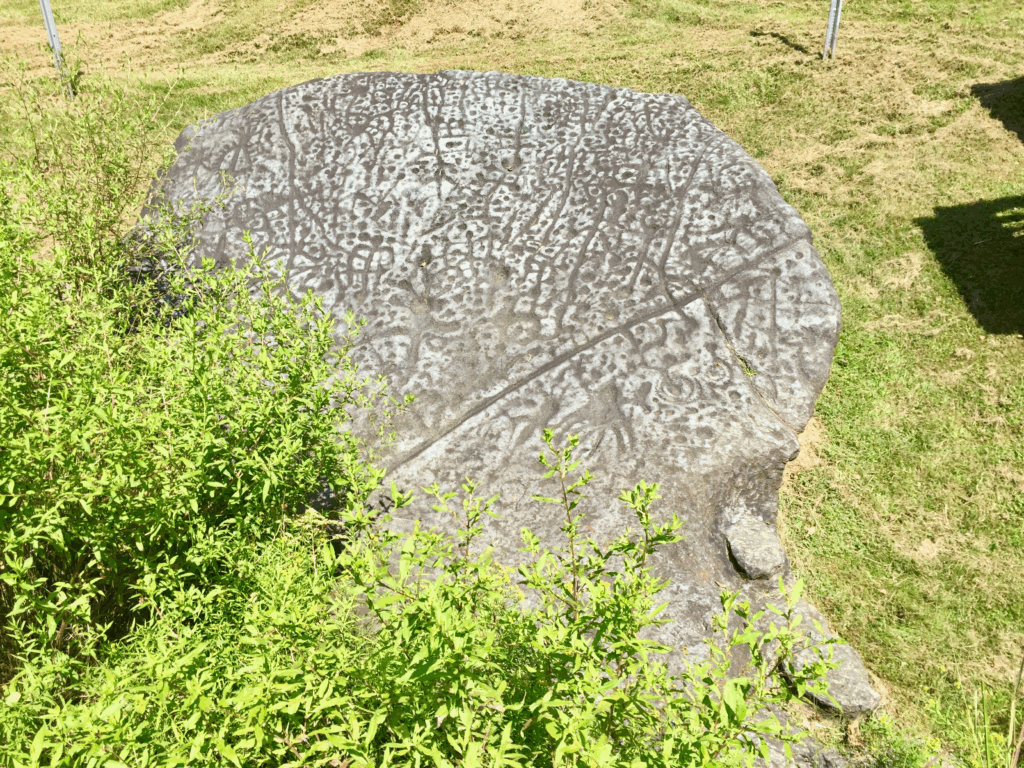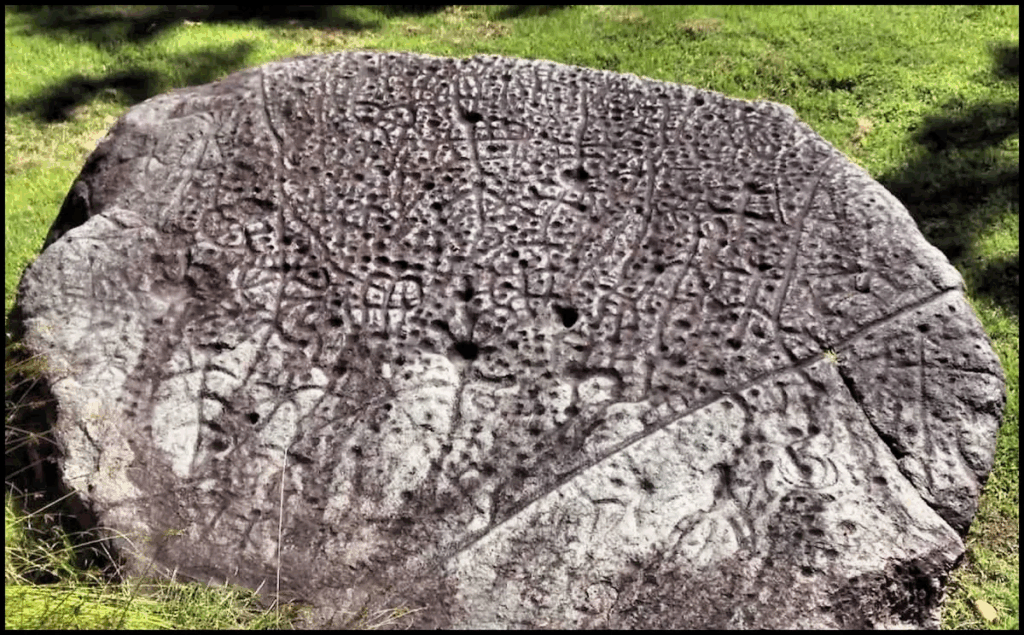Tucked away in the lush green hills of Jackson County, North Carolina, lies one of America’s most enigmatic artifacts — the Judaculla Rock. To the casual observer, it may appear to be just a large, moss-covered boulder. But look closer, and you’ll discover hundreds of strange symbols, intricate carvings, and mysterious patterns etched deep into its soapstone surface. No one knows exactly who made them — or why.
Today, the Judaculla Rock is the subject of fascination not only for historians and archaeologists, but also for those who love ancient mysteries, Native American legends, and the unexplained.

What Is the Judaculla Rock?
Judaculla Rock is a 48-ton outcropping of soapstone covered with over 1,500 petroglyphs — symbols carved into the surface by an unknown group centuries ago. These markings range from human-like figures and animal shapes to geometric spirals, handprints, and lines that seem to form celestial maps. Some researchers suggest that the rock may be over 3,000 years old, making it one of the oldest and most elaborate petroglyph sites in the southeastern United States.

What’s most intriguing? No one has definitively decoded its meaning.
The Legend Behind the Rock
According to the Cherokee people, who have lived in the region for thousands of years, the rock is sacred. It is linked to a mythical being named Judaculla (or Tsul ‘Kalu) — a giant, supernatural hunter who lived in the mountains and guarded the land. Judaculla was said to have seven fingers, immense power, and could leap from peak to peak in a single bound. Legend says he used the rock to mark territory or communicate with the spirit world.
One carving, in particular, is said to represent the handprint of Judaculla himself — a large, misshapen print with extra fingers carved into the stone. Some believe this is evidence of the mythical giant’s otherworldly nature.

A Message from the Ancients?
Despite decades of research, experts remain divided over the origin and purpose of the markings. Were they a sacred map of the heavens? A ritual calendar? A language long forgotten? Some believe the site was used for ancient ceremonies or seasonal observations. Others argue it may have marked an important gathering place or spiritual portal.
Still, fringe theorists suggest the carvings are evidence of pre-Columbian contact with other civilizations — pointing to similarities between the glyphs and ancient markings found in South America or even across the Atlantic.
None of these theories have been proven, but the mystery only adds to the allure.
Protecting the Past
In recent years, the site has gained new attention thanks to viral TikToks, YouTube documentaries, and travel bloggers who document America’s forgotten mysteries. Visitors are drawn to the site by curiosity, beauty, and the unshakable feeling that Judaculla Rock holds secrets we’ve yet to uncover.
To preserve the rock for future generations, it is now protected by the state of North Carolina, and access is limited. Visitors can view it from a respectful distance, and new research is being done using 3D imaging and ground-penetrating radar to learn more about the surrounding area.
Why This Story Captivates
In a world dominated by science and data, people are still drawn to the unknown. Stories like Judaculla Rock remind us that not everything has been explained — and that there are still puzzles carved into the Earth waiting to be solved.
It’s not just about petroglyphs on a rock. It’s about the idea that the land we walk on is rich with hidden knowledge, passed down in symbols, stories, and stone.